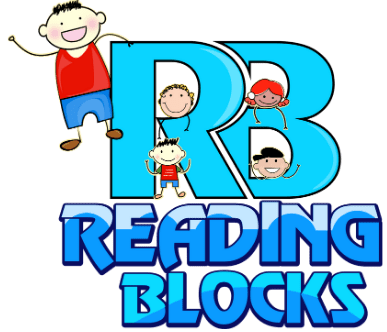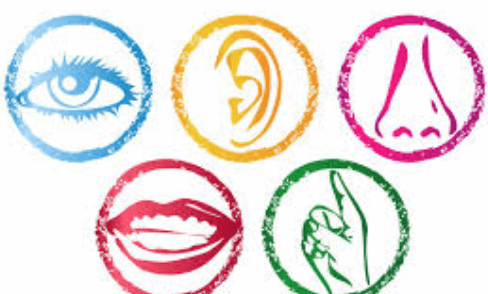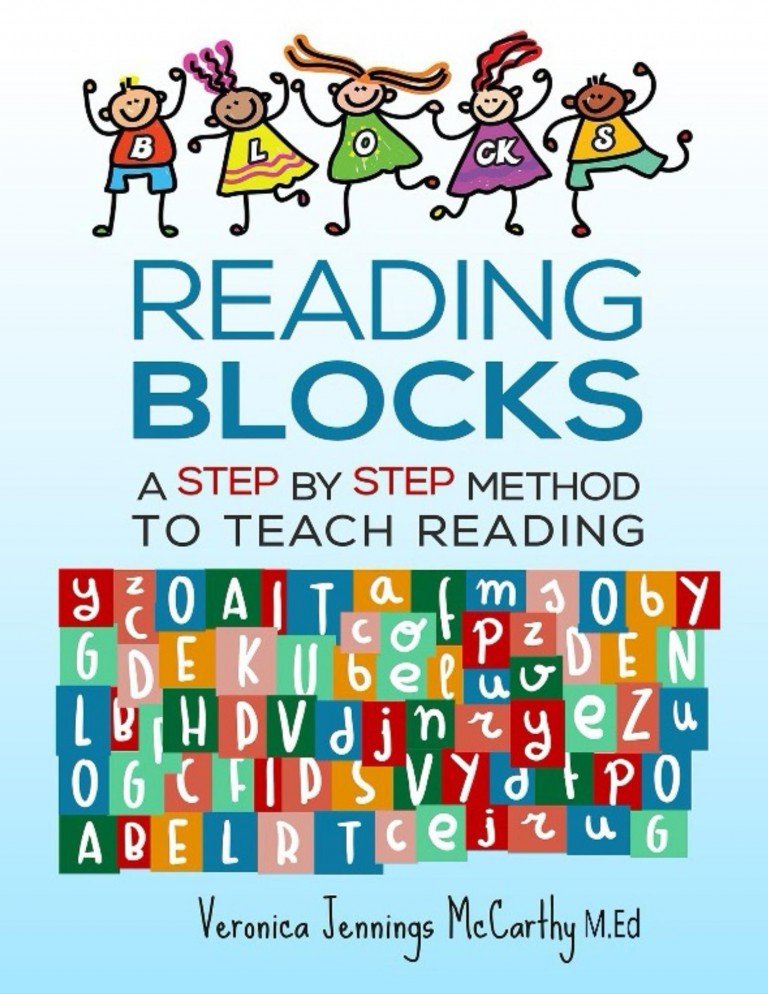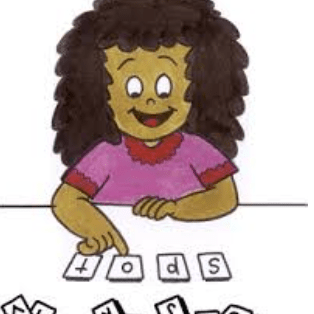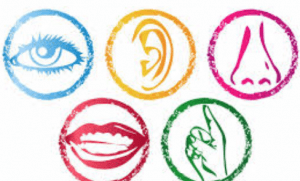
Multi-Sensory Activities For Learning to Read
Multi-Sensory Activities
Multi-sensory activities are activities that use more than one sensory pathway into the brain. Having more than one pathway into the brain makes the information easier to retrieve later (remember). Any individual with a learning difference would find multi-sensory methods helpful for learning and remembering important information.
The first activity below uses color, texture, sound, and movement to learn the name and sound of the letter “A”. These are four different pathways into the brain that will help the learner when he needs to recall that information. Now instead of just having a picture to help him remember, he has color, sound, and texture areas in the brain involved with the letter “A”.
Below are many effective multi-sensory methods that have been proven to be effective with struggling learners.
 Pour a layer of sand on a tray or cookie sheet. The sand should be a contrasting color to the bottom of the tray. For example, if the bottom of the tray is blue, the sand can be yellow. You can paint the bottom of the tray. The sand can be bought in a color or dyed. The reader writes the targeted letter while saying the sound aloud. The reader sees the color contrast between the bottom of the tray and the color of the sand, feels the coarseness of the sand against his finger while he outlines the letter, and hears his voice making the sound as well as feels the movements in the mouth making the sound. This activity is great for someone having difficulty learning letter names/sounds and for practicing sight words.
Pour a layer of sand on a tray or cookie sheet. The sand should be a contrasting color to the bottom of the tray. For example, if the bottom of the tray is blue, the sand can be yellow. You can paint the bottom of the tray. The sand can be bought in a color or dyed. The reader writes the targeted letter while saying the sound aloud. The reader sees the color contrast between the bottom of the tray and the color of the sand, feels the coarseness of the sand against his finger while he outlines the letter, and hears his voice making the sound as well as feels the movements in the mouth making the sound. This activity is great for someone having difficulty learning letter names/sounds and for practicing sight words.
- First, show a letter and say the sound. Then have the reader air write the letter using the whole
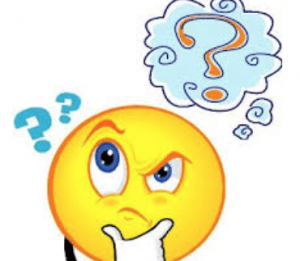 arm, not just the wrist, while saying the sound. The reader’s eyes should be closed and the reader is instructed to visualize the letter he is making on a particular colored board and a particular color letter. For example, he can visualize himself writing a red letter on a black dry-erase board. Now you have large muscle movement, hearing the sound, and visualizing the colored letter. Incorporate another pathway by having the reader imagine that the colored letter he is tracing has some sort of texture. The texture could be rough such as a brick or rock surface and then changed to silky. Have the person imagine how these different surfaces would feel as he is tracing the letter and saying the sound. (This might sound rather odd but it really works.) This activity is great for learning new letters/sounds and sight words.
arm, not just the wrist, while saying the sound. The reader’s eyes should be closed and the reader is instructed to visualize the letter he is making on a particular colored board and a particular color letter. For example, he can visualize himself writing a red letter on a black dry-erase board. Now you have large muscle movement, hearing the sound, and visualizing the colored letter. Incorporate another pathway by having the reader imagine that the colored letter he is tracing has some sort of texture. The texture could be rough such as a brick or rock surface and then changed to silky. Have the person imagine how these different surfaces would feel as he is tracing the letter and saying the sound. (This might sound rather odd but it really works.) This activity is great for learning new letters/sounds and sight words.
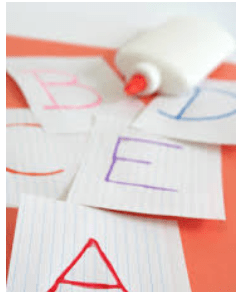 Write each letter (lower case letters first) on a colored square of tag board or cardboard. Copy over the letter with a bubble layer of glue and sprinkle sand over the glue. When this is dry, you can use the letters for tracing over while saying the sound. The reader feels the texture, sees the color, and hears the sound. This strategy activates auditory, visual, and kinesthetic brain stimulation. This means three pathways in the brain are activated. You can also buy fat plastic letters that have a bumpy texture on the top. These are great for feeling the formation of letter, while at the same time, saying the sound of the letter, and seeing a color for visual stimulation. This activity is great for learning new letter/sounds and sight words.
Write each letter (lower case letters first) on a colored square of tag board or cardboard. Copy over the letter with a bubble layer of glue and sprinkle sand over the glue. When this is dry, you can use the letters for tracing over while saying the sound. The reader feels the texture, sees the color, and hears the sound. This strategy activates auditory, visual, and kinesthetic brain stimulation. This means three pathways in the brain are activated. You can also buy fat plastic letters that have a bumpy texture on the top. These are great for feeling the formation of letter, while at the same time, saying the sound of the letter, and seeing a color for visual stimulation. This activity is great for learning new letter/sounds and sight words.
- Have the reader use his finger to write the letter on his thigh, upper arm, palm of hand, or wrist
 while saying the sound. The child has muscle movement of writing the letter, auditory stimulation by hearing the sound, and feels the letter being formed on his thigh or upper arm. I also used my finger to trace the letter on my daughter’s back and she had to guess the letter and then say the sound. The reader feels the formation of the letter and has to visualize the letter and then retrieve the name and sound. This is more difficult and should be used on letters already practiced. This activity is great for practicing difficult letter names/sounds and sight words.
while saying the sound. The child has muscle movement of writing the letter, auditory stimulation by hearing the sound, and feels the letter being formed on his thigh or upper arm. I also used my finger to trace the letter on my daughter’s back and she had to guess the letter and then say the sound. The reader feels the formation of the letter and has to visualize the letter and then retrieve the name and sound. This is more difficult and should be used on letters already practiced. This activity is great for practicing difficult letter names/sounds and sight words.
 Make letters out of clay. Then make words out of clay. Form the letter and then trace and say the sound. You can mix some sand into the clay to give it more texture. This activity is great for younger learners and learning letter names/sounds and difficult sight words.
Make letters out of clay. Then make words out of clay. Form the letter and then trace and say the sound. You can mix some sand into the clay to give it more texture. This activity is great for younger learners and learning letter names/sounds and difficult sight words.
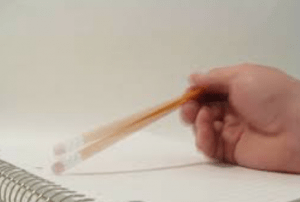
- The reader can use a stick or pencil to tap each sound he hears in a word. This helps the reader to segment the word into sounds and to realize that each sound has its own tap.
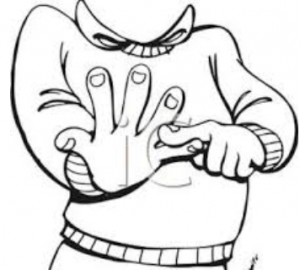 Have the reader use his fingers to count out each sound in a word. Each sound gets one finger. This is very helpful when sounding out unknown words in the future. We “count” the sounds aloud. I recommend that everyone use this technique beginning in block one, even with older struggling readers. This tool helps struggling readers to give every letter a sound in an unknown word instead of falling into the habit of just guessing and usually skipping sounds. This is a great activity to use for decoding new words.
Have the reader use his fingers to count out each sound in a word. Each sound gets one finger. This is very helpful when sounding out unknown words in the future. We “count” the sounds aloud. I recommend that everyone use this technique beginning in block one, even with older struggling readers. This tool helps struggling readers to give every letter a sound in an unknown word instead of falling into the habit of just guessing and usually skipping sounds. This is a great activity to use for decoding new words.
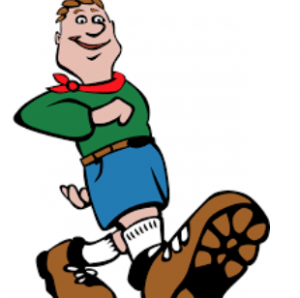
- Have the reader take one large step for every sound in a word. “March” out the sounds. For example, “cat” would be /c/ /a/ /t/ so three large steps.
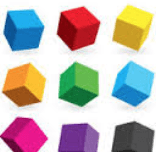 Use colored blocks to break a word into sounds. One color for each sound heard. Have the reader move each block towards him for each sound in the word. When all the sounds are brought down and sounded out, he then reads the word. You can also use colored tag board or cardboard with one square drawn on the top third of the paper, two squares drawn together in the middle third of the paper, and three squares drawn together on the bottom third of the paper. The word “at” would be formed by putting a different colored block in each of the two squares
Use colored blocks to break a word into sounds. One color for each sound heard. Have the reader move each block towards him for each sound in the word. When all the sounds are brought down and sounded out, he then reads the word. You can also use colored tag board or cardboard with one square drawn on the top third of the paper, two squares drawn together in the middle third of the paper, and three squares drawn together on the bottom third of the paper. The word “at” would be formed by putting a different colored block in each of the two squares 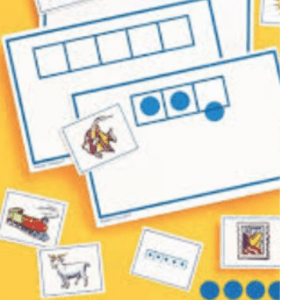 in the middle of the paper. The word cat would be formed by putting a different colored block into each of the three squares which are on the bottom third of the paper. This technique uses muscle movement (kinesthetic), visual activation, and auditory activation. The squares also give the reader a visual clue and tangible component to see the three sounds in the one word. This helps the reader to understand that the sounds in the word are separate, and he can “see” how he can say each one separately. This is a great activity to use in the beginning of the reading program and with any age learner. The learner is forced to concentrate on matching one to one, an individual sound to an individual cube in its own square.
in the middle of the paper. The word cat would be formed by putting a different colored block into each of the three squares which are on the bottom third of the paper. This technique uses muscle movement (kinesthetic), visual activation, and auditory activation. The squares also give the reader a visual clue and tangible component to see the three sounds in the one word. This helps the reader to understand that the sounds in the word are separate, and he can “see” how he can say each one separately. This is a great activity to use in the beginning of the reading program and with any age learner. The learner is forced to concentrate on matching one to one, an individual sound to an individual cube in its own square.

You can purchase dice that have alphabet letters on them instead of numbers. You can play a game of making words by throwing the alphabet dice and trying to make words from the letters which land up. Use the squares again to form one, two, and three letter words. You can also play this game with sounds. The learner can throw the dice and then get one point for every sound he can identify on the dice. He can write the letters on a dry erase board and say each sound as he writes it. This activity is great for practicing previously learned sounds. One sound per square.
- Use letter tiles to form words. Again, use the square boxes. Place one tile into one box. The
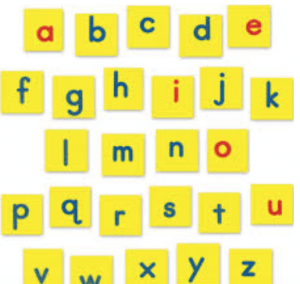 letter tiles are also great for making and changing words. For example, start with four consonant letter tiles and one vowel letter tile, (p,t,s,c,a.) Make “cat” with the tiles. The reader pulls each letter down and places each in a box. Then ask the reader to change “cat” to “pat”. The reader has to decide which sound is different, move the changed letter up, and move the new letter down. Then ask him to count the three new sounds in the word using his fingers or tapping a pencil. This is a great activity to use for practicing all new sounds and words.
letter tiles are also great for making and changing words. For example, start with four consonant letter tiles and one vowel letter tile, (p,t,s,c,a.) Make “cat” with the tiles. The reader pulls each letter down and places each in a box. Then ask the reader to change “cat” to “pat”. The reader has to decide which sound is different, move the changed letter up, and move the new letter down. Then ask him to count the three new sounds in the word using his fingers or tapping a pencil. This is a great activity to use for practicing all new sounds and words.

- Use a dry erase board or chalkboard to write letters and words. Use different colored markers. Always have the reader read the word after he has written it, or say the sound if he is at that level. This is a great activity to use for practicing new sounds and new sight words.
- Make little paper books out of the sounds he knows first. Then make books out of the words he
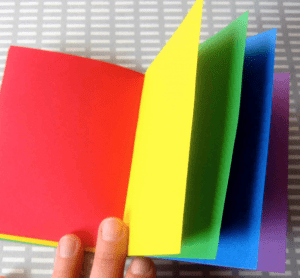
Making Mini Books knows. Then make books out of the sentences he can read. Finally make books out of stories that he makes up using all the words he has practiced. This is a great activity to use for practicing new reading skills.
When the reader is having a difficult time remembering the sounds of the letters, make an alphabet 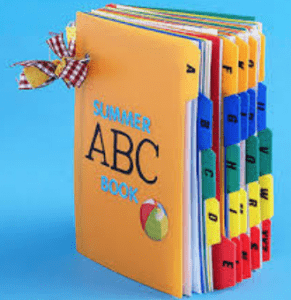 book together, one sound at a time, and use the glue and colorful sand technique. For example, start with the sound /m/. Have the reader write the letter on an index card or square of paper. Then have the reader trace over the letter with white glue and sprinkle with colored sand. Let this dry and then have the reader trace over this letter and say the sound. When he can remember this sound easily, add another sound and repeat the process. When he knows four consonant sounds add the short vowel sound of “a”. Now you can also practice blending and segmenting two and three sound words. You can also glue a picture clue on the back of the card. Block 1 has a page with recommended clue words for learning the sounds. You can do a image search on Google for a picture of the given word. Finally, you can punch a hole into the squares or index cards and clip with a metal ring. Now your reader has a little book of sounds and/or words that he can read and practice. This is a great activity to use when the reader has a learning difference and is having a difficult time remembering letter names and sounds.
book together, one sound at a time, and use the glue and colorful sand technique. For example, start with the sound /m/. Have the reader write the letter on an index card or square of paper. Then have the reader trace over the letter with white glue and sprinkle with colored sand. Let this dry and then have the reader trace over this letter and say the sound. When he can remember this sound easily, add another sound and repeat the process. When he knows four consonant sounds add the short vowel sound of “a”. Now you can also practice blending and segmenting two and three sound words. You can also glue a picture clue on the back of the card. Block 1 has a page with recommended clue words for learning the sounds. You can do a image search on Google for a picture of the given word. Finally, you can punch a hole into the squares or index cards and clip with a metal ring. Now your reader has a little book of sounds and/or words that he can read and practice. This is a great activity to use when the reader has a learning difference and is having a difficult time remembering letter names and sounds.
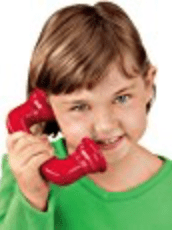
When practicing reading these little books, have the reader read the sounds or words into a telephone. You can buy a plastic telephone handset at a teacher supply store. The reader speaks into the one end and hears the sound or word from the other end. This is a great multisensory way for a reader to practice and remember the sounds and words. This is a great activity to use for a younger learner to hear the difference in sounds.
- Use colorful magnetic letter tiles on the refrigerator or any metal surface. Start with practicing
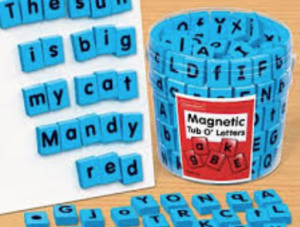 sounds and then with making words. Families spend a large portion of their time in the kitchen so it is a great place to keep some type of letter and word practice station. You can say the word of an ingredient in the dinner you are making and the reader can find the corresponding letter magnet for the first sound, the last sound, or spell the whole word if he is at that level. You can be creative here in how you practice what needs to be practiced. This is a great activity to use in the home for getting in a quick ten minute practice session.
sounds and then with making words. Families spend a large portion of their time in the kitchen so it is a great place to keep some type of letter and word practice station. You can say the word of an ingredient in the dinner you are making and the reader can find the corresponding letter magnet for the first sound, the last sound, or spell the whole word if he is at that level. You can be creative here in how you practice what needs to be practiced. This is a great activity to use in the home for getting in a quick ten minute practice session.
 Write the letters you are practicing on colored cardboard and place on the wall around the learner’s bed or bedroom wall. Use a pointer stick to practice reading the letters and sounds before bed. You can begin with a few letters and add more as he learns the first ones. You can move on to sight words after he knows all the letter names and sounds of the letters. You can play quick little five minute games with these letters. For example, “I am thinking of a letter that makes the /a/ sound, and he says the letter name “ae”. You can switch up the order with you saying the sound and him pointing to the letter that makes that sound. You can also play games with reading the sight words when they are up there. For example, “I am thinking of a word that starts with the /a/ sound.” Then the reader reads all the words on the wall that start with the /a/ sound until he guesses the correct word. He will not even realize that he his practicing his reading when it is in a game format. Make sure to make this fun. Do
Write the letters you are practicing on colored cardboard and place on the wall around the learner’s bed or bedroom wall. Use a pointer stick to practice reading the letters and sounds before bed. You can begin with a few letters and add more as he learns the first ones. You can move on to sight words after he knows all the letter names and sounds of the letters. You can play quick little five minute games with these letters. For example, “I am thinking of a letter that makes the /a/ sound, and he says the letter name “ae”. You can switch up the order with you saying the sound and him pointing to the letter that makes that sound. You can also play games with reading the sight words when they are up there. For example, “I am thinking of a word that starts with the /a/ sound.” Then the reader reads all the words on the wall that start with the /a/ sound until he guesses the correct word. He will not even realize that he his practicing his reading when it is in a game format. Make sure to make this fun. Do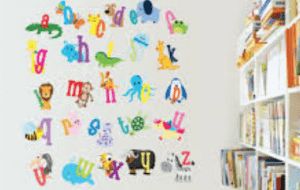 not put a whole bunch of words he cannot read on the wall around him and expect him to want to play this “game” before bed. He is tired for one, and does not want to spend more time doing something he cannot do. Practice the word first so he is familiar with it, and when he can usually get the word correct, then put it on the wall. Keep adding more sight words as he becomes fluent with the ones up there. This is a great activity to use in the home for getting in a quick five to ten minute practice session. This is also great for passive learning of information.
not put a whole bunch of words he cannot read on the wall around him and expect him to want to play this “game” before bed. He is tired for one, and does not want to spend more time doing something he cannot do. Practice the word first so he is familiar with it, and when he can usually get the word correct, then put it on the wall. Keep adding more sight words as he becomes fluent with the ones up there. This is a great activity to use in the home for getting in a quick five to ten minute practice session. This is also great for passive learning of information.
 Always have a quantity of books to read at many different reading levels and interest levels by the reader’s bed if you are a parent, or easily accessible in the classroom or tutoring station. I keep a basket for each of my children next to their bed that has books they are currently reading or interested in reading soon. Having a basket of six or seven books that are at the reader’s reading level or interest level makes the books more accessible than having 300 books in a book case. That becomes too overwhelming, especially for a struggling reader. This is a great activity for making recreational reading less intimidating and more accessible.
Always have a quantity of books to read at many different reading levels and interest levels by the reader’s bed if you are a parent, or easily accessible in the classroom or tutoring station. I keep a basket for each of my children next to their bed that has books they are currently reading or interested in reading soon. Having a basket of six or seven books that are at the reader’s reading level or interest level makes the books more accessible than having 300 books in a book case. That becomes too overwhelming, especially for a struggling reader. This is a great activity for making recreational reading less intimidating and more accessible.
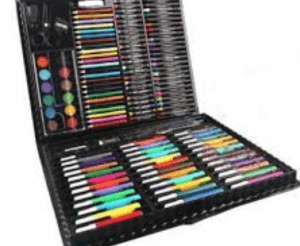 Also have pens, markers, crayons, journals, dry erase boards, and paper for writing and reading activities, easily accessible. I keep a whole cabinet in my kitchen just for writing and drawing materials. Replace the items as needed. Also keep writing materials in the reader’s bedroom. Encourage the reader to write as well as to read. They are opposite operations and will each reinforce the other. The reader can write his own stories, goals, or dreams that he wants to accomplish. Do not worry about spelling when the reader is writing in his journal. Encourage him to sound out the word he wants to spell. Spell it for him if he asks you of course, but spelling is not important in this situation. What is important is that he can take a word, and then a whole thought, from his brain, and attach sounds and letters to that word and later the whole thought. Spelling is important but just not when a person is getting their thoughts on paper. A final copy of an assignment should be spelled correctly, but a journal is for being creative and organizing thoughts. This is a great activity for making reading and writing more casual and fun.
Also have pens, markers, crayons, journals, dry erase boards, and paper for writing and reading activities, easily accessible. I keep a whole cabinet in my kitchen just for writing and drawing materials. Replace the items as needed. Also keep writing materials in the reader’s bedroom. Encourage the reader to write as well as to read. They are opposite operations and will each reinforce the other. The reader can write his own stories, goals, or dreams that he wants to accomplish. Do not worry about spelling when the reader is writing in his journal. Encourage him to sound out the word he wants to spell. Spell it for him if he asks you of course, but spelling is not important in this situation. What is important is that he can take a word, and then a whole thought, from his brain, and attach sounds and letters to that word and later the whole thought. Spelling is important but just not when a person is getting their thoughts on paper. A final copy of an assignment should be spelled correctly, but a journal is for being creative and organizing thoughts. This is a great activity for making reading and writing more casual and fun.
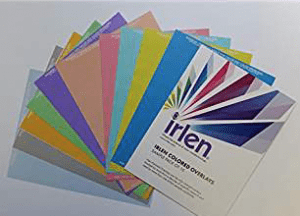 Some people benefit by using the Irlen colored overlays. These are plastic overlays in many different colors that can be placed over the page of a book. Usually a reader prefers one color over all the other colors. Some people experience greater success with reading when using these overlays and it is definitely worth mentioning. This tool is a fantastic resource for many types of learners.
Some people benefit by using the Irlen colored overlays. These are plastic overlays in many different colors that can be placed over the page of a book. Usually a reader prefers one color over all the other colors. Some people experience greater success with reading when using these overlays and it is definitely worth mentioning. This tool is a fantastic resource for many types of learners.
- I always try to incorporate a variety of color into the reading lesson. Color provides for choices
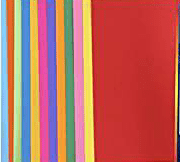 for the reader which gives him an opportunity to experience some control over the lesson. Color also stimulates areas in the brain and the more good stimulation, the better. You can bring color in by using different color dry erase markers, Irlen colored overlays, colored construction paper, colored file folders, colored folders, colored notebooks and binders. This is a great activity for all ages and all types of learners.
for the reader which gives him an opportunity to experience some control over the lesson. Color also stimulates areas in the brain and the more good stimulation, the better. You can bring color in by using different color dry erase markers, Irlen colored overlays, colored construction paper, colored file folders, colored folders, colored notebooks and binders. This is a great activity for all ages and all types of learners.
